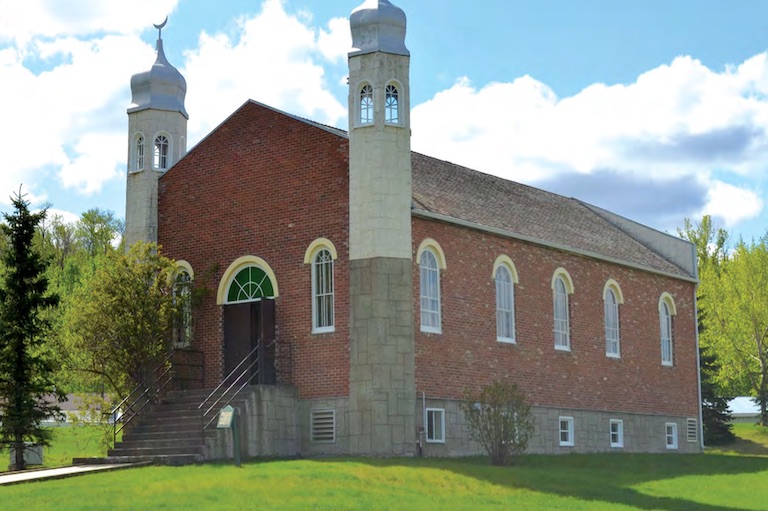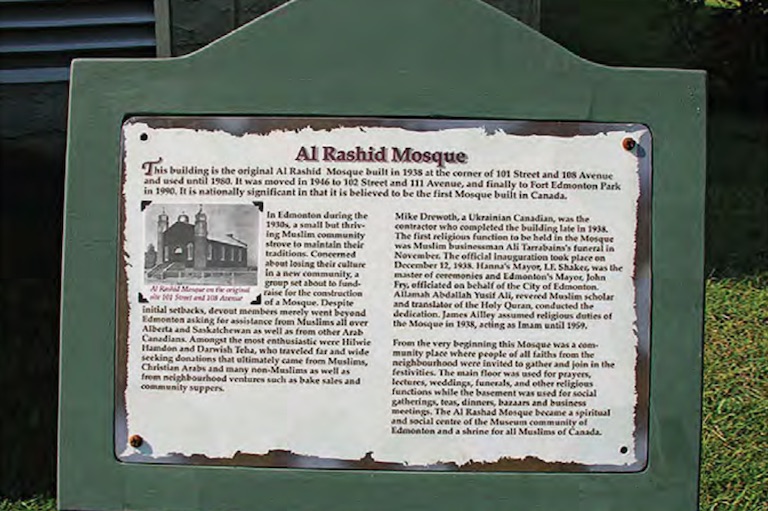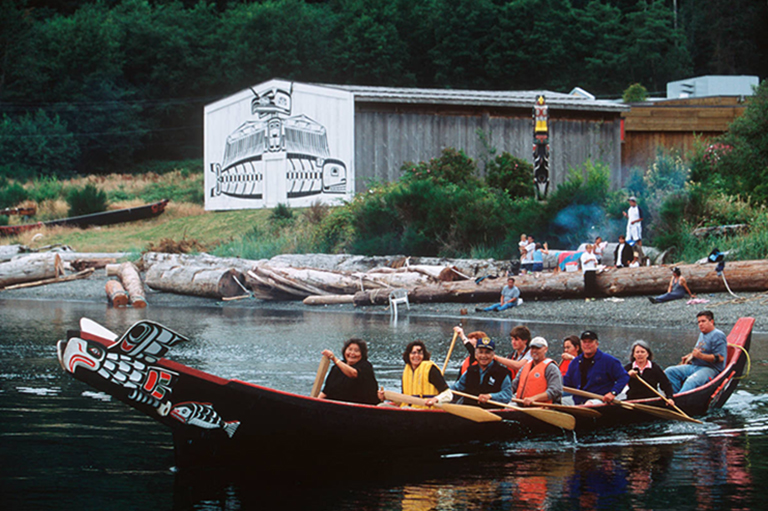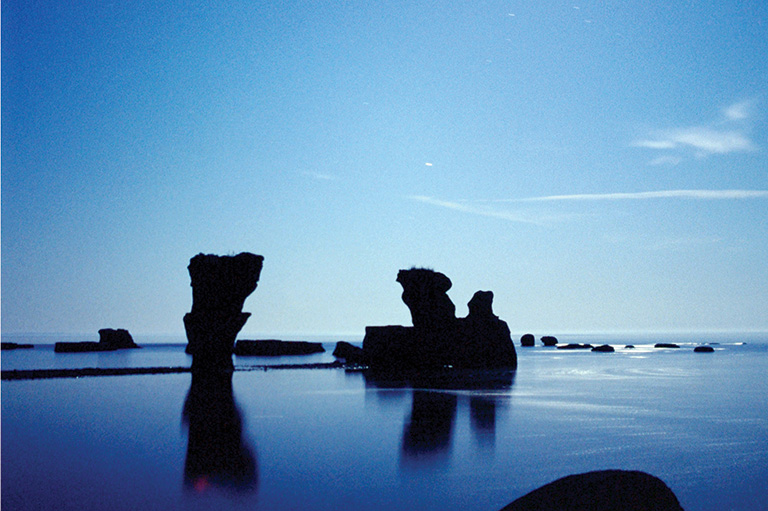Little Mosque on the Prairie

It’s a humble and sparsely furnished building that may not have the grandeur of the great mosques of Damascus, Syria, Cairo, Egypt, or Istanbul, Turkey.
But, for Canadian Muslims, Edmonton’s original Al Rashid Mosque, which was replaced by a new Al Rashid Mosque in 1982, marks a monumental chapter in a story dating back more than a century. It was Canada’s first mosque, and its story continues to be told.
My wife Kubra and I visited the original Al Rashid Mosque on a hot June day in 2014, and it was an opportunity not only to see the historic building that first opened its doors in 1938 but also to learn about the history of Muslims in Canada.
I learned the first Canadian census was taken in 1871, and it showed that there were thirteen known Muslims living in Canada. The first Muslims to arrive in Canada in large groups came mostly from what are now Lebanon and Syria in the late-nineteenth and early twentieth centuries.
Upon entering the 148-square-metre mosque, which sits in the Fort Edmonton Park tourist attraction, I was immediately curious to know why Canada’s first mosque was built in a prairie city in Alberta that, at the time, was home to fewer than ninety thousand residents.
Before visiting the mosque I read the book Canada’s First Mosque: The Al Rashid, by Richard Asmet Awid. Christian Arabs who immigrated during the same period had already established a Christian community in eastern Canada. Muslims, on the other hand, had no established community in the east and mainly opted to go west, the book explains.
In the early 1930s in Edmonton, Mayor John Fry was approached by a group of Muslims seeking a donation of a plot of land on which a mosque could be built for the region’s growing Muslim community. The city’s Muslims felt that a mosque would be more than just a place of worship — it would become the centre of their burgeoning community. Their lobbying efforts were successful, and the building was opened in 1938.

Thanks to the presence of the mosque, Edmonton’s Muslim community continued to grow, as many Muslim families were drawn to the city. Over the years, the community flourished, rising to more than sixteen thousand people by the early 1980s.
To accommodate the increase in numbers, a new and larger building was needed. In 1982, the new Al Rashid Mosque opened its doors.
The original mosque, built on Edmonton city property, was slated for demolition in the early 1990s. But, thanks to lobbying by the Muslim community, the building was saved. It was moved to Fort Edmonton Park in 1992. A visit to Fort Edmonton Park was also an opportunity to immerse ourselves in the history of Edmonton.
The park has become one of the city’s most popular tourist attractions and features a number of historical buildings representing four distinct time periods that explore Edmonton’s development from a fur-trading post in the northwest to the metropolitan centre it is today.
Kubra and I met Richard Asmet Awid, the author of Canada’s First Mosque during our 2014 visit. He gave us a tour and told us about the history of the structure and of the first Muslims to immigrate to Canada.
He explained that many Muslims changed their names upon arriving in the country in the hopes of more easily integrating in to Canadian society. And so, some went from Ahmed to Frank, or Ismail to Sam, all in an effort to better fit in to a society that, otherwise, may not have welcomed them.
Today, the Edmonton Muslim community consists of more than sixty thousand residents from at least sixty-two different ethnic backgrounds.
As I sat and prayed on the decades-old carpet in the decades-old building, I thought not only about the early history of Canadian Muslims but also about the astounding growth of the Muslim community across Canada. From thirteen Muslims in 1871 to more than one million today is an amazing story — one whose humble beginnings can be traced directly back to Edmonton’s little mosque on the prairie.
Themes associated with this article
Advertisement





